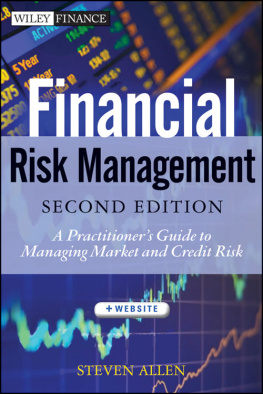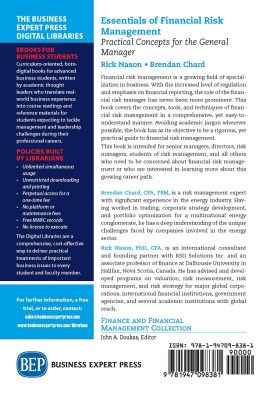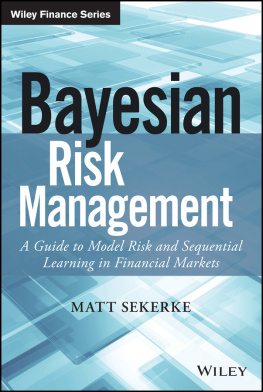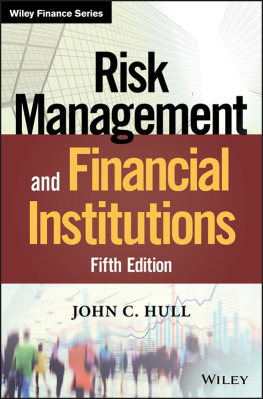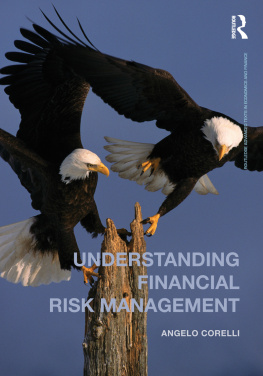Founded in 1807, John Wiley & Sons is the oldest independent publishing company in the United States. With offices in North America, Europe, Australia, and Asia, Wiley is globally committed to developing and marketing print and electronic products and services for our customers' professional and personal knowledge and understanding.
The Wiley Finance series contains books written specifically for finance and investment professionals as well as sophisticated individual investors and their financial advisors. Book topics range from portfolio management to e-commerce, risk management, financial engineering, valuation, and financial instrument analysis, as well as much more.
For a list of available titles, visit our Web site at www.WileyFinance.com .
Cover image: John Wiley & Sons, Inc.
Cover design: Tom Fewster / iStockphoto, samxmeg / iStockphoto
Copyright 2013 by Steven Allen. All rights reserved.
Published by John Wiley & Sons, Inc., Hoboken, New Jersey.
Published simultaneously in Canada.
The First Edition of this book was published in 2003 by John Wiley & Sons, Inc.
No part of this publication may be reproduced, stored in a retrieval system, or transmitted in any form or by any means, electronic, mechanical, photocopying, recording, scanning, or otherwise, except as permitted under Section 107 or 108 of the 1976 United States Copyright Act, without either the prior written permission of the Publisher, or authorization through payment of the appropriate per-copy fee to the Copyright Clearance Center, Inc., 222 Rosewood Drive, Danvers, MA 01923, (978) 750-8400, fax (978) 646-8600, or on the Web at www.copyright.com . Requests to the Publisher for permission should be addressed to the Permissions Department, John Wiley & Sons, Inc., 111 River Street, Hoboken, NJ 07030, (201) 748-6011, fax (201) 748-6008, or online at http://www.wiley.com/go/permissions .
Limit of Liability/Disclaimer of Warranty: While the publisher and author have used their best efforts in preparing this book, they make no representations or warranties with respect to the accuracy or completeness of the contents of this book and specifically disclaim any implied warranties of merchantability or fitness for a particular purpose. No warranty may be created or extended by sales representatives or written sales materials. The advice and strategies contained herein may not be suitable for your situation. You should consult with a professional where appropriate. Neither the publisher nor author shall be liable for any loss of profit or any other commercial damages, including but not limited to special, incidental, consequential, or other damages.
For general information on our other products and services or for technical support, please contact our Customer Care Department within the United States at (800) 762-2974, outside the United States at (317) 572-3993 or fax (317) 572-4002.
Wiley publishes in a variety of print and electronic formats and by print-on-demand. Some material included with standard print versions of this book may not be included in e-books or in print-on-demand. If this book refers to media such as a CD or DVD that is not included in the version you purchased, you may download this material at http://booksupport.wiley.com . For more information about Wiley products, visit www.wiley.com .
Library of Congress Cataloging-in-Publication Data:
Allen, Steven, 1945
Financial risk management [electronic resource]: a practitioner's guide to managing market and
credit risk / Steven Allen. 2nd ed.
1 online resource.
Includes bibliographical references and index.
Description based on print version record and CIP data provided by publisher; resource not viewed.
ISBN 978-1-118-17545-3 (cloth); 978-1-118-22652-0 (ebk.); ISBN 978-1-118-23164-7 (ebk.); ISBN 978-1-118-26473-7 (ebk.)
1. Financial risk management. 2. Finance. I. Title.
HD61
658.15'5dc23
2012029614
To Caroline
For all the ways she has helped bring
this project to fruition
And for much, much more
Foreword
Risk was a lot easier to think about when I was a doctoral student in finance 25 years ago. Back then, risk was measured by the variance of your wealth. Lowering risk meant lowering this variance, which usually had the unfortunate consequence of lowering the average return on your wealth as well.
In those halcyon days, we had only two types of risk, systemic and unsystematic. The latter one could be lowered for free via diversification, while the former one could only be lowered by taking a hit to average return. In that idyllic world, financial risk management meant choosing the variance that maximized expected utility. One merely had to solve an optimization problem. What could be easier?
I started to appreciate that financial risk management might not be so easy when I moved from the West Coast to the East Coast. The New Yorkbased banks started creating whole departments to manage financial risk. Why do you need dozens of people to solve a simple optimization problem? As I talked with the denizens of those departments, I noticed they kept introducing types of risk that were not in my financial lexicon. First there was credit risk, a term that was to be differentiated from market risk, because you can lose money lending whether a market exists or not. Fine, I got that, but then came liquidity risk on top of market and credit risk. Just as I was struggling to integrate these three types of risk, people started worrying about operational risk, basis risk, mortality risk, weather risk, estimation risk, counterparty credit risk, and even the risk that your models for all these risks were wrong. If model risk existed, then you had to concede that even your model for model risk was risky.
Since the proposed solution for all these new risks were new models and since the proposed solution for the model risk of the new models was yet more models, it was no wonder all of those banks had all of those people running around managing all of those risks.
Well, apparently, not quite enough people. As I write these words, the media are having a field day denouncing JPMorgan's roughly $6 billion loss related to the London whale's ill-fated foray into credit default swaps (CDSs).
As the flag bearer for the TV generation, I can't help but think of reviving a 1970s TV show to star Bruno Iksil as the Six Billion Dollar Man. As eye-popping as these numbers are, they are merely the fourth largest trading loss since the first edition of this book was released. If we ignore Bernie Madoff's $50 billion Ponzi scheme, the distinction for the worst trade ever belongs to Howie Hubler, who lost $9 billion trading CDSs in 2008 for another bank whose name I'd rather not write. However, if you really need to know, then here's a hint. The present occupant of Mr. Hubler's old office presently thinks that risk management is a complicated subject, very complicated indeed, and has to admit that a simple optimization is not the answer. So what is the answer? Well, when the answer to a complicated question is nowhere to be found in the depths of one's soul, then one can always fall back on asking the experts instead. The Danish scientist Niels Bohr, once deemed an expert, said an expert is, A person that has made every possible mistake within his or her field.
As an expert in the field of derivative securities valuation, I believe I know a fellow expert when I see one. Steve Allen has been teaching courses in risk management at New York University's Courant Institute since 1998. Steve retired from JPMorgan Chase as a managing director in 2004, capping a 35-year career in the finance industry. Given the wide praise for the first edition of this book, the author could have rested on his laurels, comforted by the knowledge that the wisdom of the ages is eternal. Instead, he has taken it upon himself to write a second edition of this timeless book.

